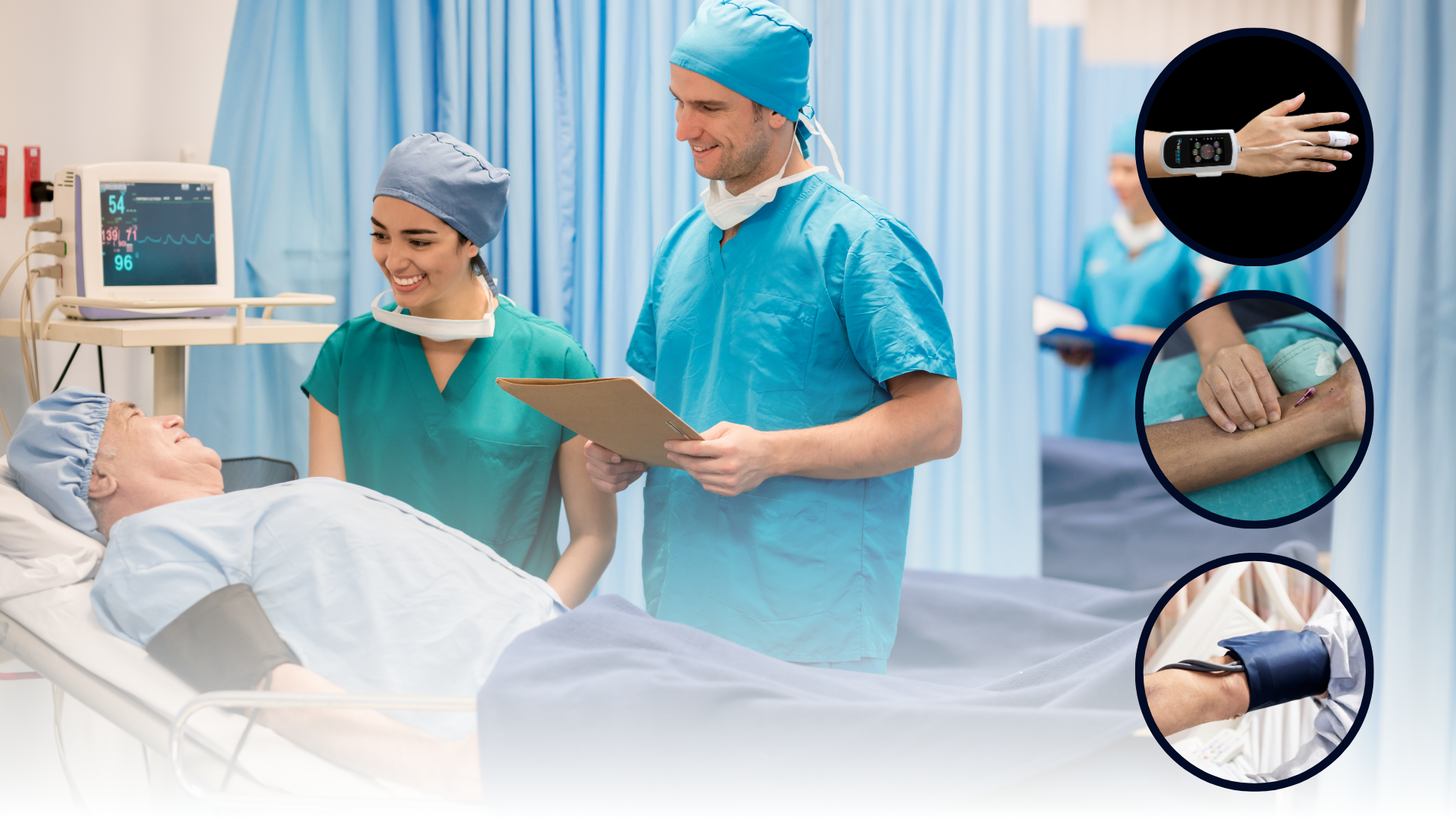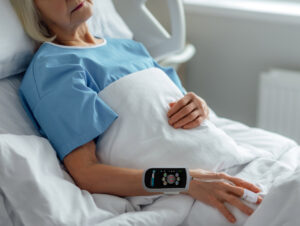
BP cuff, A-line or VitalStream noninvasive hemodynamic monitor?
October 7, 2024
Should you use a blood pressure cuff, arterial line or VitalStream to monitor your perioperative patients? Learn the about the strengths and weaknesses of each.
| Goal | Blood pressure cuff | Arterial line | VitalStream noninvasive monitor |
|---|---|---|---|
| Hypotension detection | Limited. BP is a late indicator of decline and blind spots can cause further delay intervention. | Offers continuous BP. | Enables early detection of decline with continuous monitoring of BP, SV, CO, SVR and more. |
| Tailored treatment strategy | Does not offer insight into the root cause of hypotension which can result in suboptimal outcomes. | Does not offer insight into the root cause of hypotension which can result in suboptimal outcomes. | Allows for personalized treatment that targets the root cause of hypotension. (With fluid, vasopressors & inotropes). |
| Personalized fluid management | Fluid needs are not assessed. Can lead to over or under hydration and result in complications. | Fluid needs are not assessed. Can lead to over or under hydration and result in complications. | Can assess and guide optimal fluid management with the touch of a button. |
| OR efficiency | Quick setup. | Can take 15+ minutes for set up. | Can be set up in preop in under 90 seconds. |
| Seamless monitoring | Can be used throughout care settings with significant blind spots/gaps in data. | Continuous monitoring but not typically used outside the OR and ICU. | Can be used for seamless and continuous monitoring from intake through discharge. |
| Patient satisfaction | Can be uncomfortable for patients and restrict movement. | Invasive, uncomfortable and restricts movement. | Offers a comfortable, low pressure finger sensor and a wireless form factor that allows for ambulation. |
| Cost containment | Decisions based on limited data can lead to high complication costs and penalties. | Decisions based on limited data can lead to high complication costs and penalties. | Enables more informed decisions that can reduce preventable complications, and drive VBC and optimal reimbursement. |
| Health equity | Decisions made with incomplete information. Can be inaccurate on high BMI patients. | Decisions made with incomplete information. Can be unsuccessful with high BMI patients. | Enables data-based decisions. Tested on patients with a BMI of 50.1 Demonstrated a 19% greater monitoring success rate when compared to an A-line.1 Has been successful on patients with a perfusion index below 1.4.1,* |
| Ease of use | Easy to use. | Procedure must be performed by a skilled provider. | Easy to use. Can be quickly learned with minimal instruction. |
More medical news and events

Caretaker Medical Receives Inaugural Healthcare Tech Innovation Award and $200,000 Grant from Medical Society of D.C.
WASHINGTON, DC, UNITED STATES, April 2, 2025 /EINPresswire.com/ -Caretaker Medical is honored to announce it has been awarded the Healthcare Technology Innovation Award, along with…

Caretaker Medical Awarded the Grand Prize in NIH RADx Tech for Maternal Health Challenge
Caretaker Medical, a digital health company focused on developing hemodynamic monitoring devices, today announced that it has been awarded the $525,000 grand prize in the…

VitalStream offers continuous hemodynamic monitoring solution amid IV fluid shortage
Philadelphia, PA – October 9, 2024 – Caretaker Medical, a pioneer in advanced hemodynamic monitoring technology, is highlighting the critical role of its VitalStream solution…
